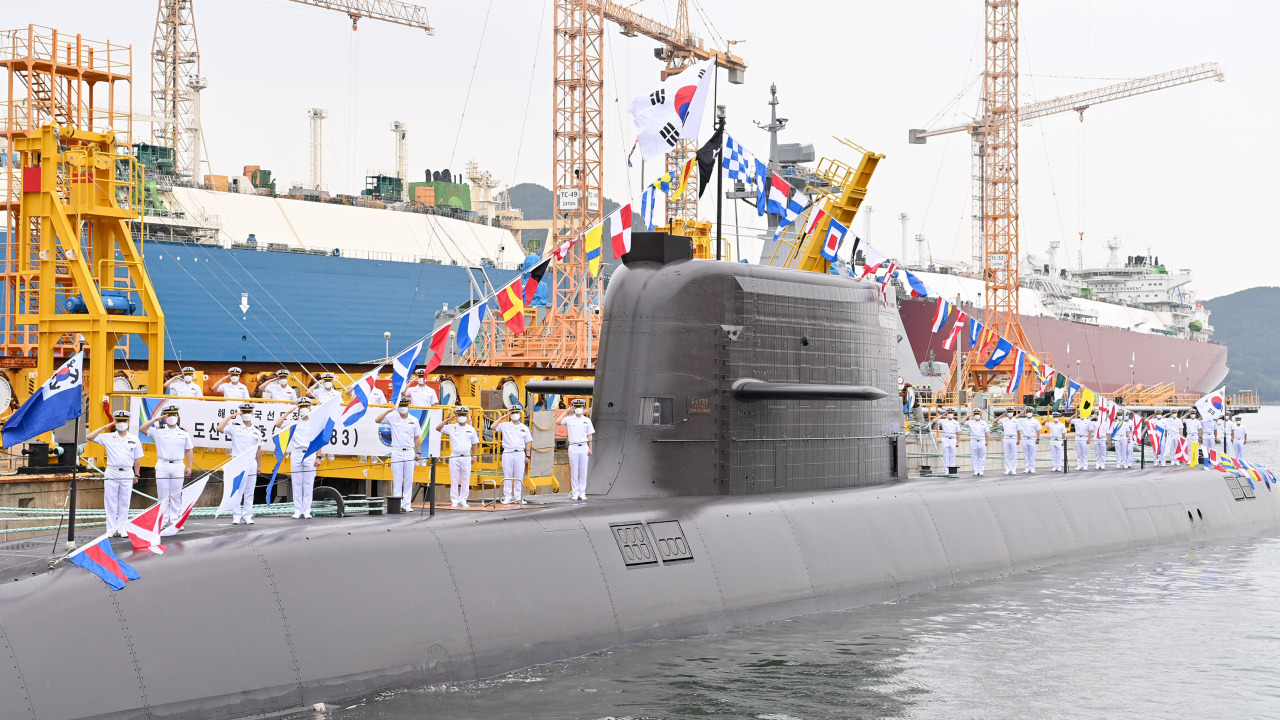South Korea and North Korea are locked in an expanding arms race to bolster their naval power through submarine-launched ballistic missiles (SLBM) with no end to tensions in sight.
SLBMs are hard to intercept because they are fired from submarines deep in the sea. Seven countries that have nuclear weapons -- China, France, India, North Korea, Russia, the UK and the US – have developed them. South Korea is the only non-nuclear state to have tested them, recently.
Nuclear warheads make North Korea’s SLBMs far more powerful than South Korea’s. But Seoul has a lead in submarines and is looking to widen the gap.
North’s upper hand in missileNorth Korea, which last tested its SLBM lineup in October 2019 with the Pukguksong-3, revealed the latest 5 series in January this year. The 5 series is believed to be able to fly longer and carry larger warheads than the Pukguksong-3, which could fly about 2,000 kilometers, well beyond the Korean Peninsula.
South Korea’s Hyunmoo series could fly about 800 kilometers and reach anywhere in North Korea. The South Korean military has said it will increase the range and firepower. But experts say Seoul’s missiles pale in comparison to Pyongyang’s.
“Ballistic missiles without a nuclear warhead atop are no match to those with one. North Korea just has better SLBMs, unless we decide to go nuclear on ours,“ said Ryu Seong-yeop, an intelligence analyst at the Korea Research Institute for Military Affairs in South Korea.
Ryu said the military’s plan to make more ballistic missiles capable of carrying heavier warheads could destroy North Korea’s underground missile bases, but not directly counter Pyongyang’s nuclear missiles.
“Ballistic missiles are a vehicle, the means, not the end itself. What we mount matters the most,” Ryu said, suggesting that the military use its 2022-26 defense blueprint, worth 315 trillion won ($271 billion), to bring in more fighter jets -- such as the US-made F-35 -- and improve its missile defense.
Shin Jong-woo, a senior analyst at the Korea Defense and Security Forum, said Seoul cannot compete with Pyongyang, at least on SLBMs, because South Korea cannot employ nuclear devices. Shin also suggested bolstering air power with the latest stealth fighter jets to target North Korean leadership.
South’s edge in submarine
North Korea touts more powerful SLBMs but it has yet to make operational a submarine capable of firing them. Pyongyang, which partially revealed in 2019 a modified Soviet-era Romeo class model, has never publicly test-fired an SLBM from the 3,000-ton submarine.
The regime is believed to be working on building a 4,000-ton submarine that could carry as many as six SLBMs, twice the number the Romeo class carries. But it is unclear how long and deep the North Korean submarines can stay underwater -- a capability vital to delivering a surprise attack.
Meanwhile, South Korea test-fired this month an SLBM from its Dosan Ahn Chang-ho class submarine, the country’s first 3,000-ton homegrown vessel capable of carrying as many as six SLBMs, the highest number for a diesel-powered submarine.
The Dosan class is able to stay underwater for as long as three weeks and reach depths of 400 meters and beyond.
The Navy plans to make the Dosan class combat ready as early as August next year and by the late 2020s deploy six submarines in total, each of which could carry up to 10 SLBMs.
Seoul, which is eyeing launching bigger submarines as part of the 2022-26 defense plan, is also close to greenlighting a nuclear-powered submarine, which will further contribute to enhancing its naval power to strike back Pyongyang in case it is attacked first.
By Choi Si-young (
siyoungchoi@heraldcorp.com)






![[Exclusive] Hyundai Mobis eyes closer ties with BYD](http://res.heraldm.com/phpwas/restmb_idxmake.php?idx=644&simg=/content/image/2024/11/25/20241125050044_0.jpg)
![[Herald Review] 'Gangnam B-Side' combines social realism with masterful suspense, performance](http://res.heraldm.com/phpwas/restmb_idxmake.php?idx=644&simg=/content/image/2024/11/25/20241125050072_0.jpg)
